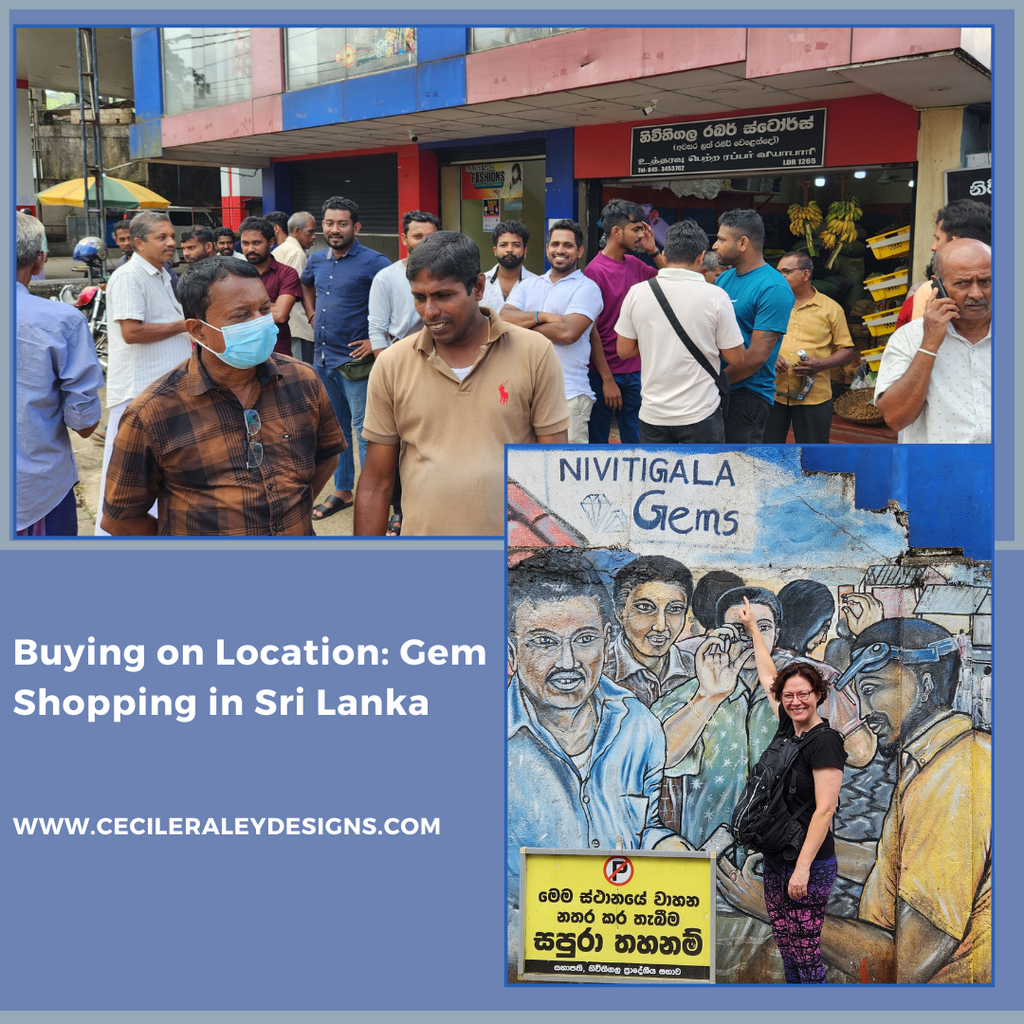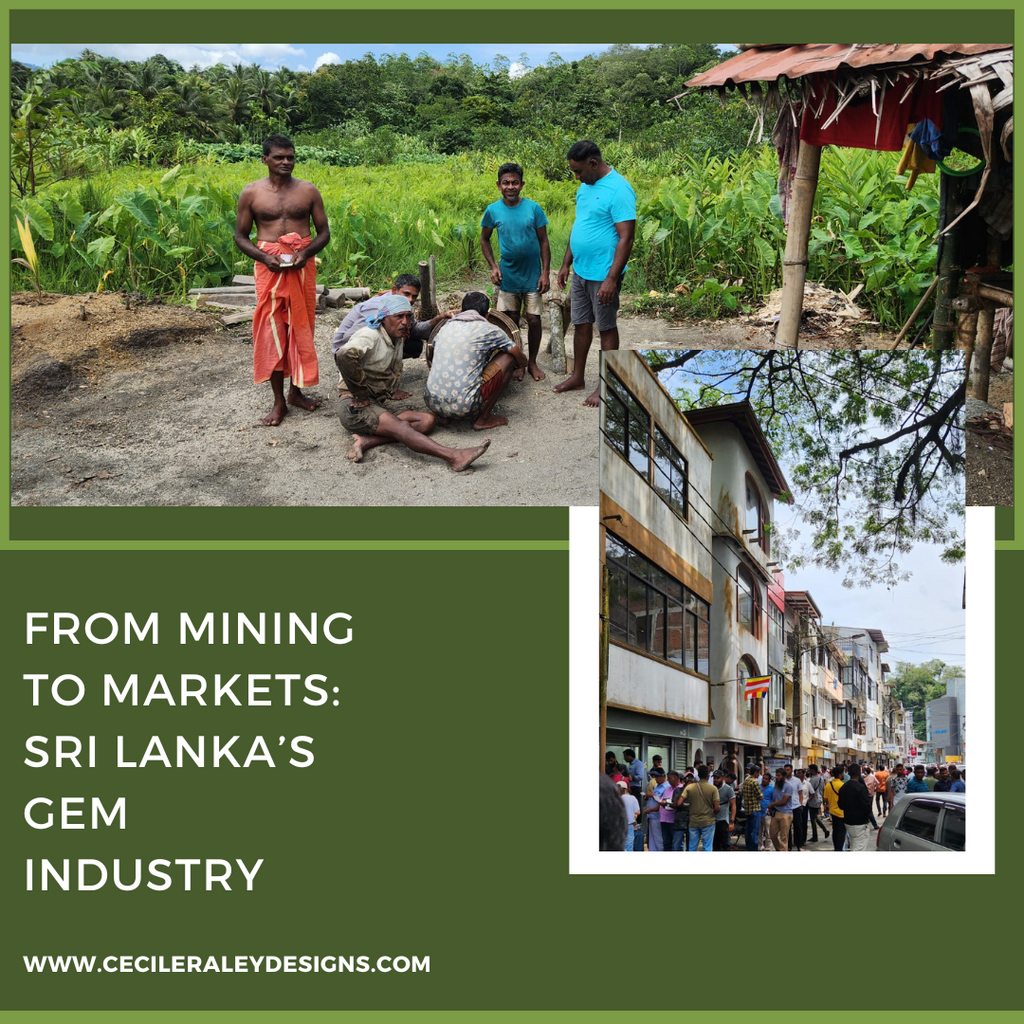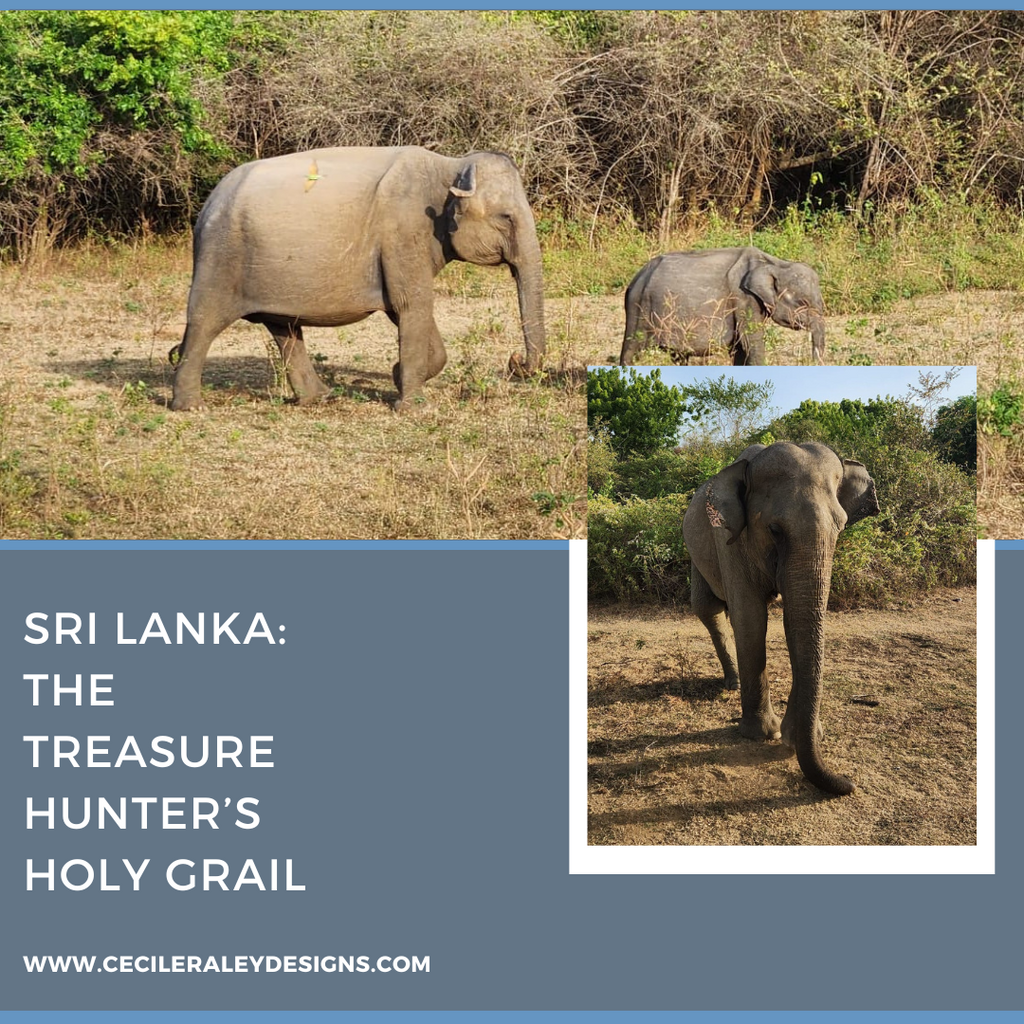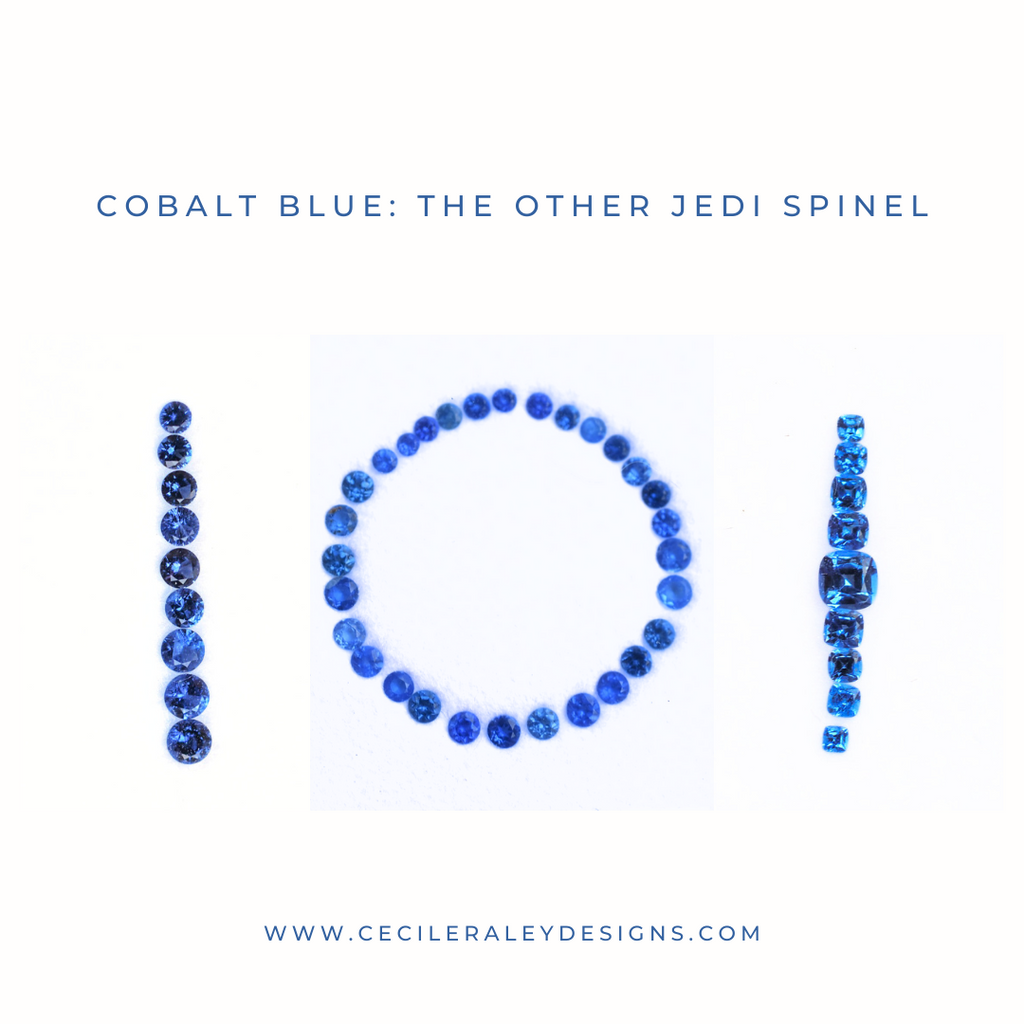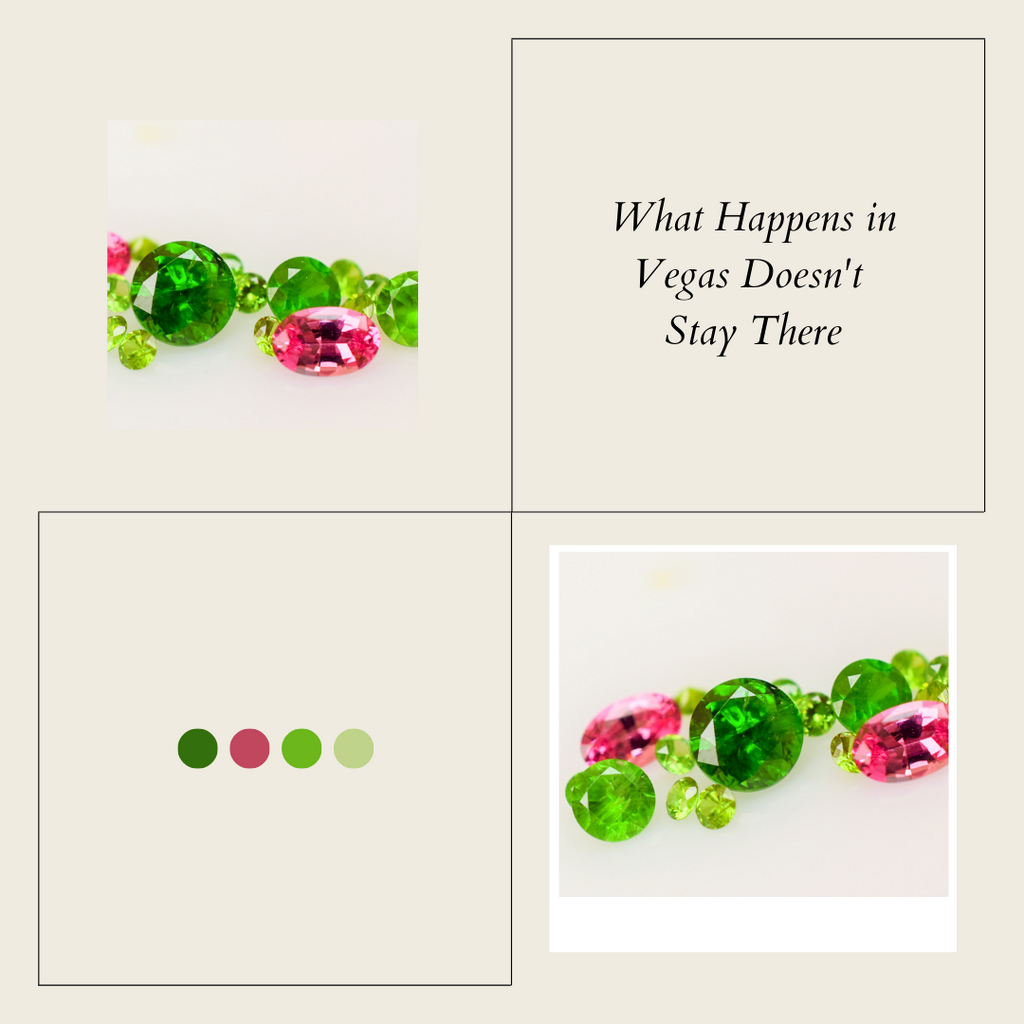Namibia’s Gems and Crystals Today
If you read my last few blogs, then you know that I traveled to Namibia for a fact finding mission. About a decade ago or more, when I entered the trade more seriously, there were a lot of gorgeous blue and seafoam Namibian tourmaline on the market. These gems were never cheap but they were worth the price because they had virtually no grey or sooty daytime tones, and they were a great alternative to the much more expensive Paraiba tourmaline.

But eventually these offerings dried up, and my sources said that mining in Namibia had decreased significantly. So when my travel buddy Jochen invited me on a trip, I was game. Jochen and his friend Klaus wanted to check out what kind of collectors' minerals are available these days, and I wanted to find out more about tourmaline.
Unfortunately, a few days into the trip I broke my ankle in three places while jogging: a friendly dog ran into me in an effort to get me to play, and that backfired. So instead of gem hunting and traveling to see the world famous Namibian desert, I got to sample the Namibian health care system. I can’t say it was boring, but it really wasn’t what I had in mind.
Luckily for me, Jochen and Klaus were able to continue on their journey after getting me safely stowed at Lady Pohamba Hospital in Windhoeck, the capital, where I received excellent care. I had asked them to report to me daily and send pictures, which they duly did. Upon completion of their journey, Jochen wrote me a summary of his journey, and I am translating it here for you so that you can be up to date on the current gem market in Namibia.
Here's the story, in Jochen’s words:
The day after dropping Yvonne off at Lady Pohamba hospital, Klaus and I continued on our crystal hunting journey that was so abruptly cut short after Yvonne’s accident. Our first destination was a place called Spitzkoppe, a giant rock formation located north-west of Windhoeck, about a day’s drive. Spitzkoppe is in the Erongo region, which is known for a number of gorgeous minerals such as polychrome tourmaline, topaz, large quartz crystals, aquamarine and the very rare mineral Jeremejevite.

When we arrived at the turnoff to the road towards the large Spitzkoppe, we saw a group of artisanal miners that had set up stands with their offerings. They lived in a small grouping of the typical Namibian round houses found in the Erongo region. Unfortunately there was little of good quality to buy – just some black tourmaline and a lot of bad looking aquamarine. But we scored with some lemon-yellow hyalite with strong fluorescence under long wave UV light. (At a later point, we also saw some gorgeous faceted hyalite and a loupe clean piece of jeremejevite in a private collection, but the gems were not for sale).
Our journey continued through the land of the Damara, a rocky desert thinly populated by camel thorn trees and a little bit of brush here and there. This lonely area is where the Himba live, one of the few Namibian tribes that has not yet fully adapted to the influence of European culture. I was able to take a photo of a young Himba woman in her traditional clothing.

Our next destination was the mining village of Uis. During colonial times, this village was dominated by giant open pit mines for zinc and wolfram. We had heard that there was still some local artisanal mining under way with vendors selling their wares along the road. Unfortunately, upon arrival we found only three deserted vendor stands underneath a camel thorn tree with a jar to leave cash for any rocks taken. But wares offered were not even worth stopping for.

Rumor had it that we would find more stands along the way so we continued on, but we only found a few more unmanned tables with rocks and the same tin can asking for donations if you took one. There was no human being in sight, so nobody to ask if there was more to be discovered. Disappointed, we turned back.
On we drove through this completely deserted landscape north west toward the Gobobose mountains.

Just past the impressive looking Brandberg mountain we encountered a lonely road sign with “amethyst” written on it, so we followed the turn and arrived at a village called Bobobseb, an assembly of perhaps 50 huts and tents with open mine pits located in the distance around the village.

The hills around Boboseb are composed of basalt layers from volcanic explosions in different time periods. Some of these layers contain hollow spaces – geodes – in between. These geodes occasionally contain quartz crystals similar to the Herkimer “diamonds” (which are also just quartz crystals) as well as amethyst. Some of the previous finds from this region have fetched up to $80,000 in the international mineral world and were featured in mineralogy books that report on the region. Miners are a cautious folk. When we initially approached them to ask for better material, they were quite hesitant, but after some chit chat during which we revealed that we were geologists and had some knowledge of the Namibian mining world, they started to show us quartz crystals of much better quality (though nothing like the fabled rocks we had seen in our books and
online).

We shopped with them for several hours and despite not finding anything fantastic, we were pretty pleased with our bounty.
On the next day, we took a second drive into the region. On that day, we met a woman of German descent who lived in this wasteland together with her South African husband and a child. Her husband was a geologist and mineral hunter as well, and from him we learned that all of the most interesting claims in the region were already in the hands of a few white people who use heavy machinery and a lot of money to work on unearthing these crystals from the basalt rock – apparently this is quite tough labor because basalt is very hard. The biggest problem faced by the locals is the lack of water in the surrounding region. Before our departure, we therefore gifted our new friends 20 liters of water from our tank. They had not left their tent in the wilderness for over eight months and were exceptionally grateful.
A shorter drive west, this time on much better maintained gravel roads, we reached the Atlantic coast north of Hentjesbaie. I had spent the night there 58 years ago, while I was on a solo expedition of the skeleton coast that led me almost to the border of Angola. Back then, Hentjesbaie was just a collection of a few huts. Nowadays it is a larger town composed of very pretty single family homes. Many of these homes were up for sale, probably of interest to the many south African fishermen we saw working along the coast line. In Hentjesbaie we met a woman named Vera Rath who owned a small gem shop. Vera was in charge of sales for the family claim in the Gobobose mountains – her four brothers were doing the mining. She had a number of beautiful crystals for sale, but her prices were similar to those in Europe and the U.S., so it was not really worth it for us to buy much. Vera also told us that most good finds are immediately sold to long standing clients that come to Namibia to pick up directly. Presumably these clients were able to buy in bulk and had deeper pockets than we did in general. We did, however, purchase several beautiful and shiny black tourmaline from her, as well as two pieces of gold crystals on malachite from the Kaokoveld.

On the main road outside Hentiesbaie vendors were offering salt crystals on rickety tables, and here too we could make a donation of cash into a jar or a can. These crystals were what we call hopper crystals (deep, right angled crystal impressions) and were quite beautiful to look at. So we picked a few and left money in the jar as instructed. Unfortunately, the salt did not last long – it started to disintegrate before we finished our journey, so we ended up leaving it all behind.

From Hentiesbaie, we drove the 60 miles south to Swakopmund, a pretty German style colonial village whose quaint architecture is still nearly fully intact. There, we visited the Crystal Museum and saw some of what are probably the largest crystals mined in Erongo, as well as many faceted tourmaline and topaz.

A small nearby shop called Desert Gems also offered some minerals for sale and I was able to buy crystals from older finds. We sent Yvonne some pictures of their faceted gems but the prices, again, were close to the European and U.S. market so it was not worth buying on location for a wholesaler. We concluded that even a tourist who came to Namibia to buy gems would be better off just buying Namibian gems locally rather than flying to Namibia, unless of course they were interested in seeing the country itself!
Putting our crystal shopping ambitions behind us, we decided therefore that our final destination should be a touristy one: Sossuvlei, a small town in the Naukluft Nature park. In Afrikaans the word “Vlei” refers to a large dip, or small valley. In Sossuvlei, you can see some of the largest dunes in the world. Also, these dunes that aren’t yellow, but red like the Arizona red rocks because the rocks have a lot of iron content. These look most spectacular during sunrise and sunset and they were a lovely ending to what turned out to be a beautiful and adventurous journey through a country, that's easy to travel to.
As I am turning 80 this year, I will not be returning here again, but I hope that Yvonne has another chance to go in the future, whether for gem hunting or not.


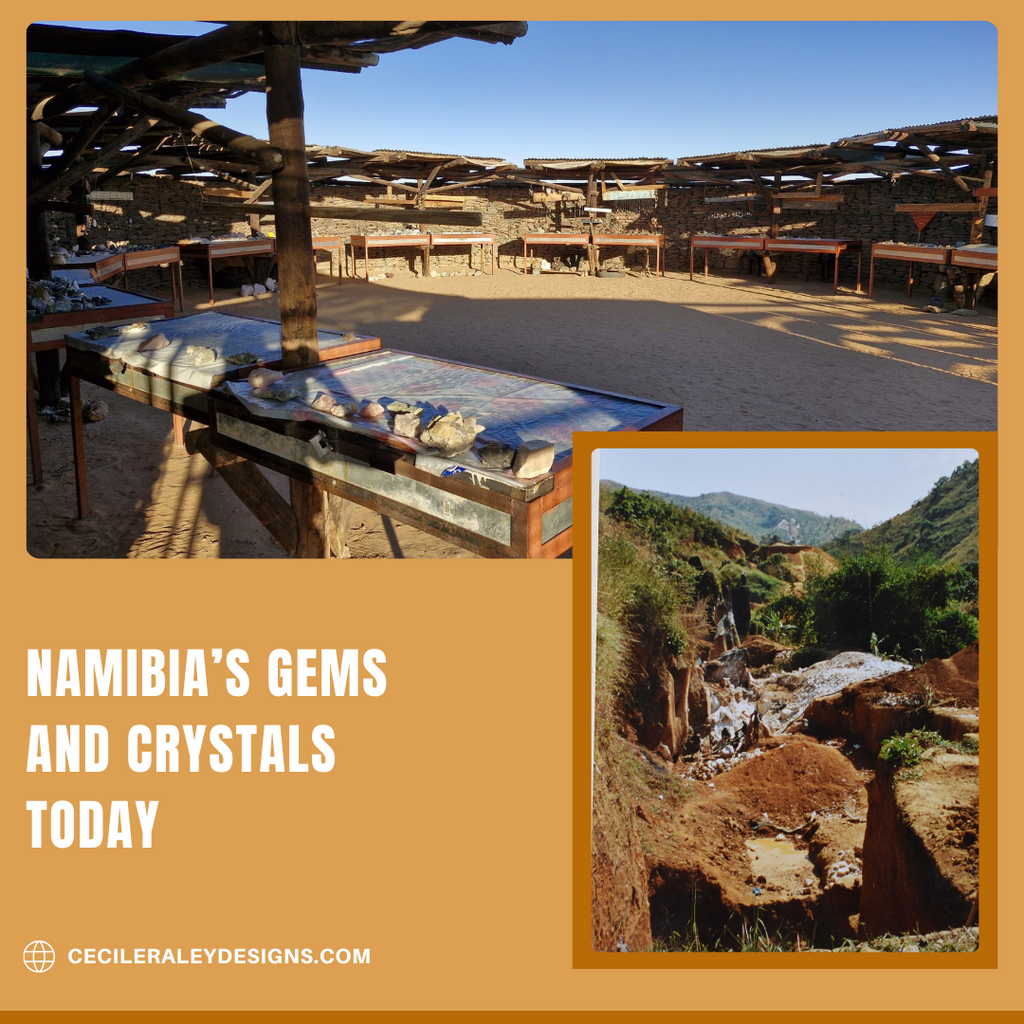
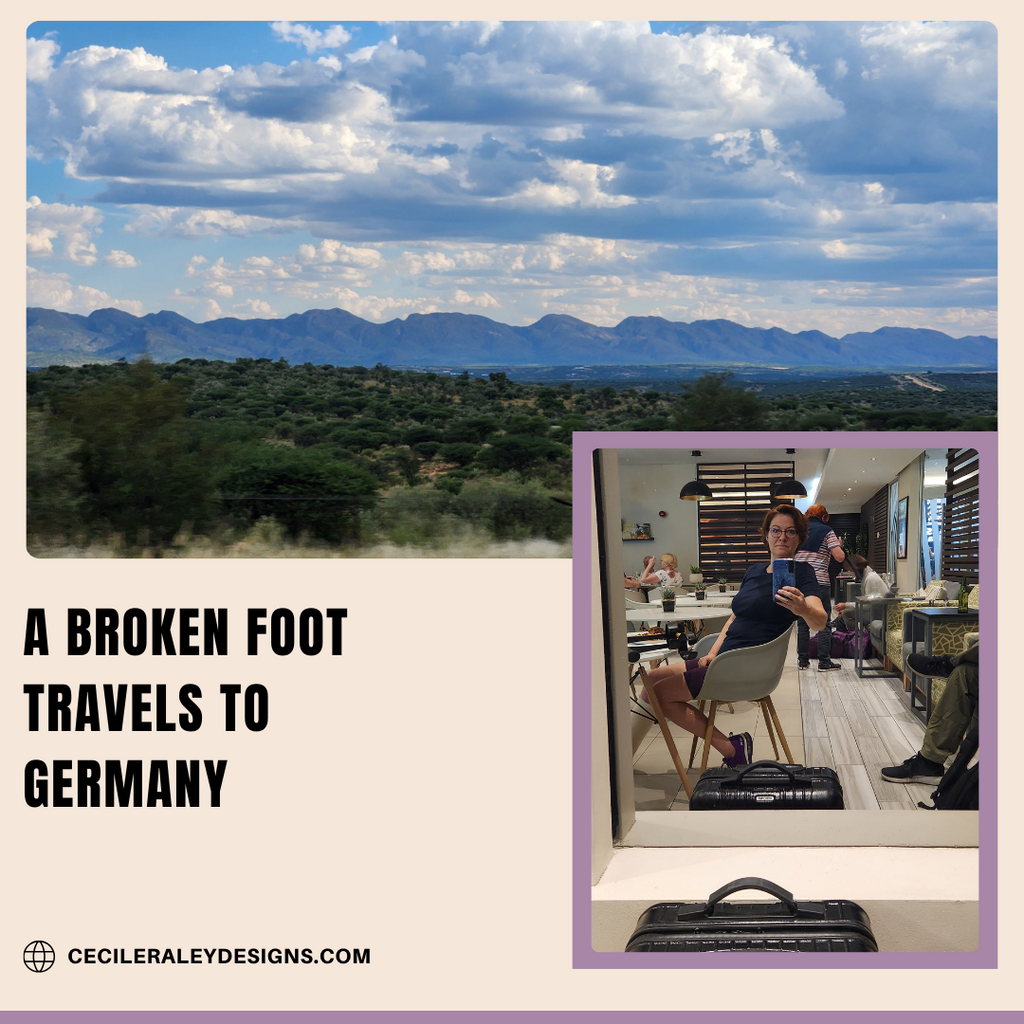






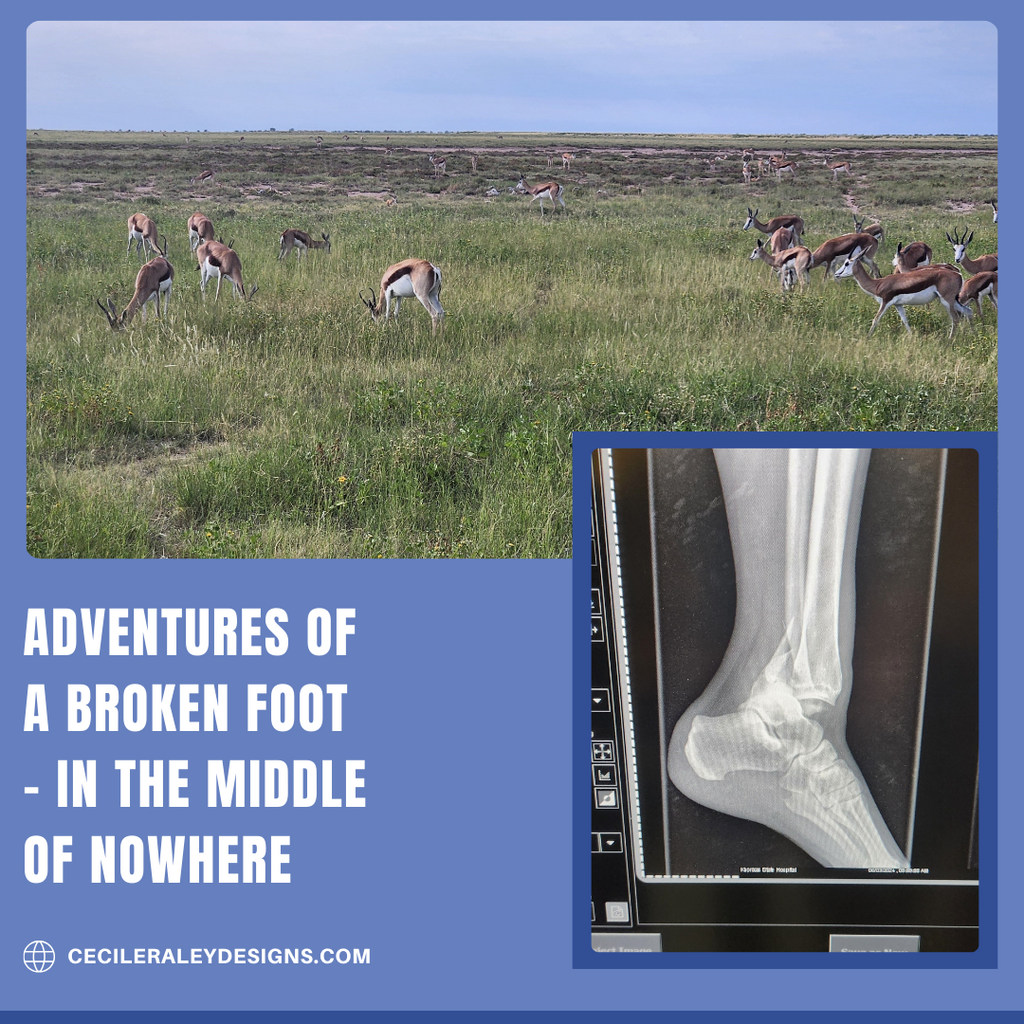




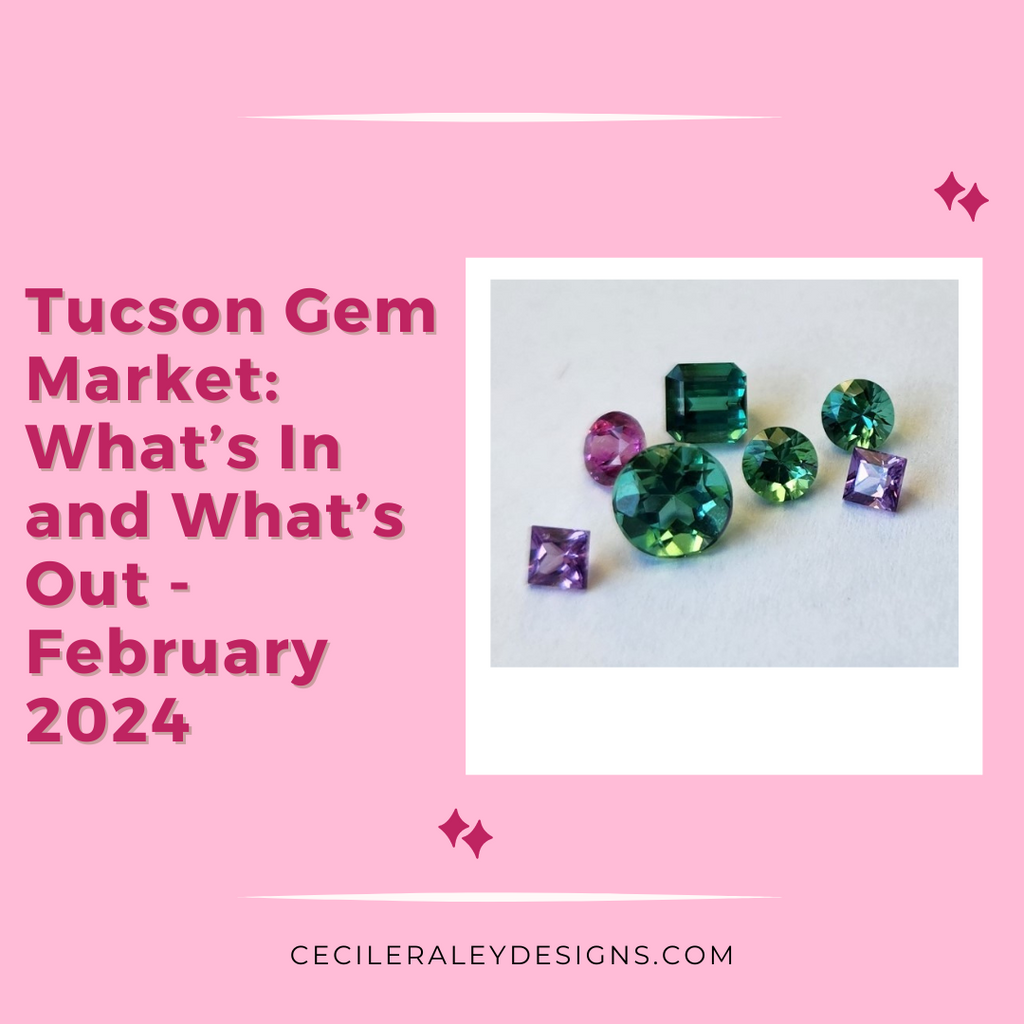




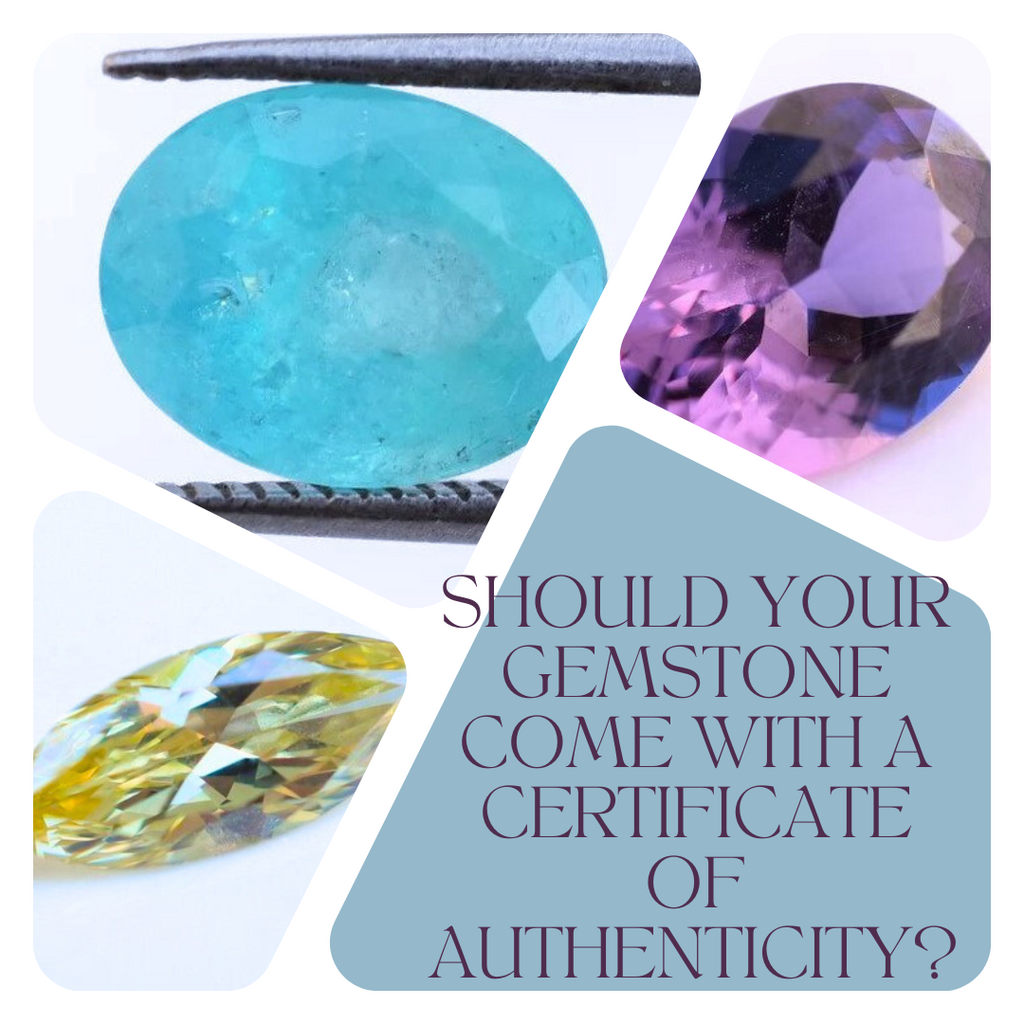

 A matched pair will require two separate reports, though one can request the reports be combined into one. Many of our more expensive gems come with an AGL Gem Brief or Prestige Report, depending on the value of the gem and the information we thought would be most valuable for you to have.
A matched pair will require two separate reports, though one can request the reports be combined into one. Many of our more expensive gems come with an AGL Gem Brief or Prestige Report, depending on the value of the gem and the information we thought would be most valuable for you to have.

